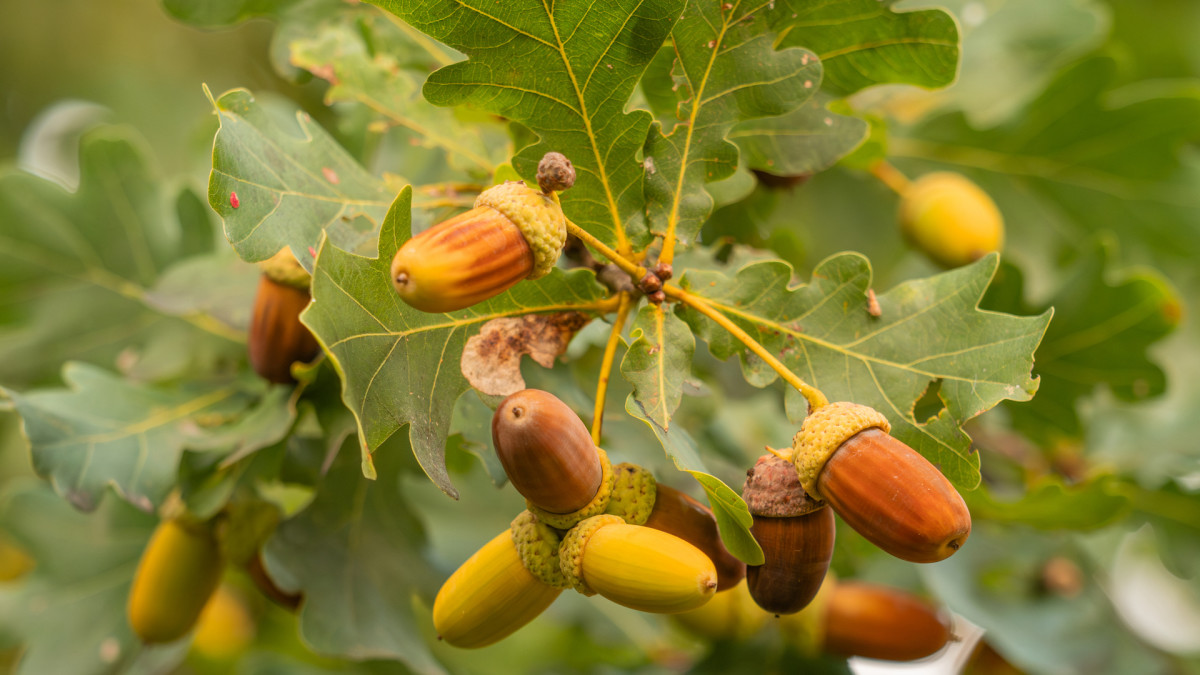
Without a doubt, oaks are the most coveted species of tree in the whitetail woods. Furthermore, they produce some of the most powerful food sources available to deer. But getting oaks to the age where they can produce an amount of mast that can truly benefit your deer can be extremely difficult, not to mention it can take decades. This is why taking care of your juvenile oak trees and giving them the highest chance for success is so important.
Young Oaks
If you’re lucky enough to find a few young oak trees on your property, you need to protect them. While a mature oak tree is extremely hearty and strong, young oaks can be the exact opposite. The slow-growing oak can often be suffocated by faster-growing poplars and maples, which will choke out the much needed sunlight the young oak tree must receive to thrive. Cutting back any and all invading trees to allow ample sunlight is a must. Not only will this increase the amount of sunlight, but help improve the root structure and increase water absorption.
After releasing these oaks from the competition of other trees, you then need to protect them from the biggest oak tree destroyers on the planet—mature bucks. As summer turns to fall, these trees start to prepare for winter, and at the same time, mature bucks prepare for the upcoming rut.
The young oaks are starting to conserve energy, making them super susceptible to any damage they might receive during the fall and winter months, all while bucks are rubbing trees to claim territory. Basically, if these trees do get damaged, they will spend most of the next growing season trying to recover and not producing new growth, ultimately prolonging their journey to maturity.
A trunk protector can be used to help shield the tree’s trunk from buck rubs, but will still allow the tree’s branches to be vulnerable to licking branches or winter browse. This is why I prefer to use a couple of metal fence posts and some wire fencing to completely surround and defend the entire base of the tree’s trunk.
Mature Oaks
Once an oak tree reaches maturity at roughly 25 to 35 years of age, it becomes more resilient to damage but can still be affected by competition from younger trees. A healthy mature oak with low competition will be shaped like a lollipop, focusing its growth on width and not height. An oak tree growing with heavy competition will focus on height, rather than width. Generally, the wider the tree is, the healthier and more likely the tree is to produce a consistent acorn crop. But these old patriarchs can still be affected by younger, faster-growing trees.
“Releasing” an oak simply means, you release it from the surrounding competition. Trees will compete for light, water, or nutrients. So typically, releasing means just removing other overtopping trees.
In Wisconsin, I would see maples overtake oaks all the time. As these maples grow, they would start cutting out sunlight to the bottom branches of the oaks, and the oaks' defense would be to kill the non-efficient branches off, focusing on growth higher in the tree. This would cause the tree to be shaped more like a mushroom than a lollipop, therefore lowering its acorn production.
Clearing out competition before the tree gets to the point of killing off its lower branches is crucial because even if the tree is released, a mature tree will not recover and regrow lower acorn-producing branches. This suffocation will continue to happen until the tree eventually goes dormant and dies.
Not Just Oaks
It’s not just oak trees that need protecting, any soft or hard mast-producing trees will greatly benefit from being released and protected. This is one of the easiest and cheapest ways to increase the health of your forest and in turn, your deer herd. All the hard work you put in during the off months will accumulate and create a deer hunting paradise…you’ll just have to be patient.






